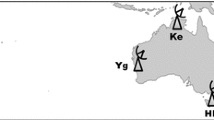Abstract
In order to assess the accuracy, reliability and efficiency of current inertial surveying systems a joint project has been started at the University of the Bundeswehr Munich. As a part of this project the testnet Ebersberger Forst has been established. It consists of 60 monumented points located at cross-roads in a flat area and it makes up a grid pattern of6 N-S and9 E-W traverses with a spacing of1–2 km. The points are determined by classical surveying techniques with a standard deviation of less than1 cm forE, N andH. Observation campaigns were carried through with a Ferranti, a Honeywell and a Litton system. Each campaign consisted of three independent missions performed under identical observation schemes. The preliminary evaluation of the data sets leads to standard deviations of between8 and16 cm for each coordinate if determined in a single mission with a Honeywell or Litton system. The correlations along a traverse follow approximately the series ρ, ρ2, ρ3, ... with ρ⋟0.9. Cross correlation is only present betweenE orN, respectively, andH. The positions observed with the Ferranti system are less accurate, which might be explainable by the applied software and by two gross input errors during the missions. A rigorous post-mission adjustment of the data considerably improved the results.
Similar content being viewed by others
References
W. CASPARY, H. BORUTTA, R. KÖNIG: Network Densification by Inertial Positioning. Paper presented at the 7th Symposium on Geodetic Computations, Cracow 1985.
J. HANNAH: The development of comprehensive error models and network adjustment techniques for inertial surveys. Report No. 330 of the Department of Geodetic Science and Surveying. Ohio 1982.
G.W. HEIN, B. EISSFELLER, H. LANDAU: Comparative Study of the Ferranti, Honeywell and Litton Inertial Surveying System: Testnet “Werdenfelser Land”. Proc. Third Int. Symp. on Inertial Technology for Surveying and Geodesy, Banff, Canada, Sept. 16–20, 1985. UCSE Report 60005, Calgary, 1986.
W. LECHNER: Azimuth Determination with Inertial Measuring Systems. Proc. Third Int. Symp. on Inertial Technology for Surveying and Geodesy, Banff, Canada, Sept. 16–20, 1985. UCSE Report 60006, Calgary, 1986.
D.G. MILBERT: Inert 1: A Program for Planning and Simultaneous Adjustment of Inertial Surveys. Proceedings FIG XVII, No. 511.5, Sofia 1983.
U.A. RAUHALA: Array algebra approach of self-calibrating inertial traverse and net adjustments (unpublished report). Florida 1983.
K.P. SCHWARZ, A.G. ARDEN, J.J.H. ENGLISH: Comparison of Adjustment and Smoothing Methods for Inertial Networks UCSE Report Number 30006, 1984.
Author information
Authors and Affiliations
Rights and permissions
About this article
Cite this article
Caspary, W.F., König, R. Comparative study of the Ferranti, Honeywell and Litton inertial surveying systems testnet Ebersberger Forst. Bull. Geodesique 60, 143–153 (1986). https://doi.org/10.1007/BF02521014
Received:
Accepted:
Issue Date:
DOI: https://doi.org/10.1007/BF02521014




